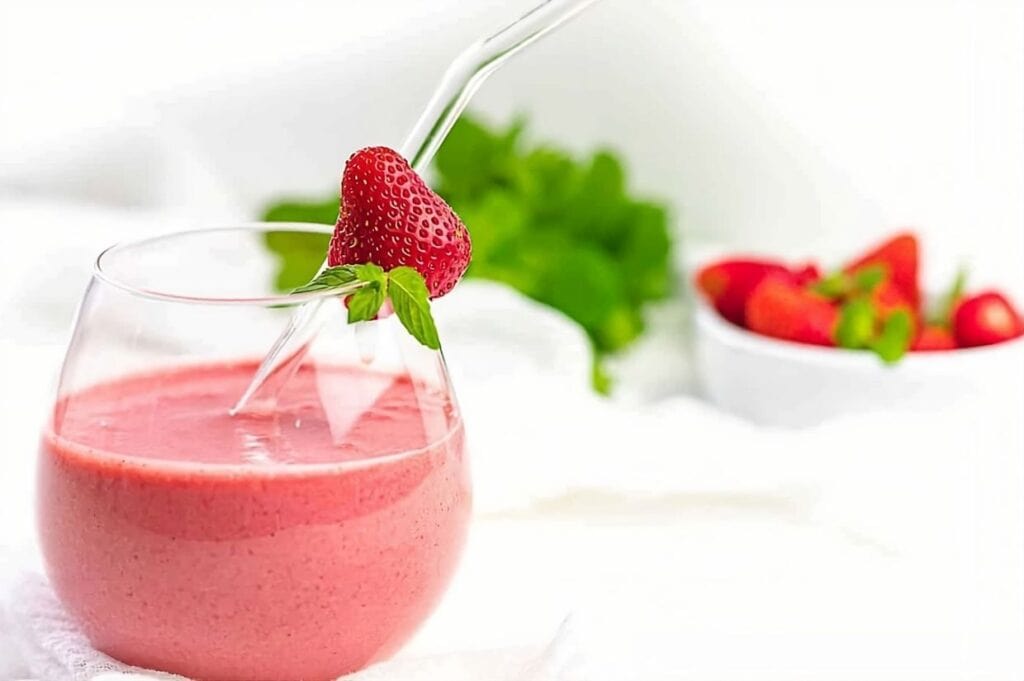There’s an art to making smoothies that deserves its own spotlight. Striking the perfect balance of texture, consistency and flavor while keeping it healthy is not an easy feat. Learn the seven techniques that have divided smoothie lovers on the best way to make this delicious drink, from the order of blending to the choice of liquid base.

What’s the right order of blending?
There are different ways to blend a smoothie, and there is a debate surrounding the best order of ingredients. Advocates of the liquid-first method say that adding liquids first creates a vortex that pulls the solid ingredients down for better blending. Others believe that the layering technique is the way to go. This involves putting soft ingredients like yogurt at the bottom and adding frozen products at the top to avoid clumps. There is also an option to blend in stages, where you blend some ingredients first and then add more gradually to ensure consistency.
If you’re not sure what your preference is, run an experiment where you make the same strawberry mint smoothie at separate times using different techniques. Maybe you’ll find that it tastes the same despite the blending order or that blending in stages makes the drink taste different.
Frozen or fresh bananas?
Bananas are a smoothie staple, commonly used to bring a natural sweetness to the concoction. The battle that divides enthusiasts is whether fresh or frozen bananas should be used.
On the one hand, fresh bananas are lighter and have a stronger banana flavor. The sweetness level can also be adjusted by choosing how ripe of a banana you’d like to use. Supporters of frozen bananas, however, argue that freezing bananas gives the smoothie a delicious creamy texture similar to milkshakes. Not only that, but frozen bananas keep the smoothie cold without diluting it like ice cubes would. The only way to know which you prefer is to experiment and discover which texture and flavor appeal to your taste buds.
Which liquid base should you use?
Smoothies can be made with various liquid bases, sparking controversy on which should be deemed the best one. Many individuals prefer using dairy milk for the creamy texture it brings while others may opt for plant-based milk or almond milk if they face dietary restrictions or want a lower-calorie alternative.
If you’re not a fan of milk-based smoothies, you’ll probably opt for water or even coconut water. Though some would argue that water is boring, using water keeps the smoothie light. Coconut water adds a bit of sweetness and electrolytes, which would be perfect for hydration, especially if you’re on an intensive hike in the mountains of Oman. Your choice of liquid depends on the type of flavor and nutritional value you’re seeking.
Does protein powder have a place in smoothies?
Protein powder can have that distinct chalky taste that ruins whatever it’s added to. However, advocates of this ingredient can overlook the taste as it’s an easy way to increase protein intake after a workout. Others would rather get their protein from more natural sources like Greek yogurt, nut butter or even mushroom powder for smoothies. These alternatives ensure your smoothie packs a punch of protein without artificial additives. Your choice of protein addition depends on your tolerance for the powder form and whether you mind its taste.
Ice or no ice?
Using ice in smoothies is controversial as it can dilute the flavors and leave a grainy texture. However, ice lovers say that ice is necessary for a refreshing and light smoothie. Undeniably, the frosty texture created by ice hits the right spot, especially on a hot day. If you’re on the fence about adding ice, you can also use frozen fruit instead to get that coldness while preserving flavor.
What’s the best sweetener to use?
Some smoothie enthusiasts refuse to add extra sweeteners, while others insist on a drizzle of honey or maple syrup. The use of these ingredients can cause a divide as although they can improve the flavor, they also add empty calories, which is a big deal breaker for those on a strict healthy diet. There’s also the argument that the fruits used in the smoothie already provide all the sweetness needed through natural sugars. The middle ground is using dates to get that extra sugar along with fiber and other nutrients while avoiding processed sweeteners.
Kale or spinach?
Greens are a staple in most smoothies, but the conundrum arises from choosing the right type of greens. The case of kale versus spinach is a popular one that sparks debate. Fans of kale point out that it contains a rich nutritional value, including high levels of vitamins A, C and K, which is unbeatable. It may have a bolder flavor and be a bit difficult to blend smoothly, but its nutrients are worth that trade-off.
Fans of spinach believe that this green is the superior ingredient for smoothies as it is still nutritious, yet it doesn’t overpower other flavors and blends well. The ease of the taste of spinach allows it to be more versatile and easily paired with other ingredients. Ultimately, whether you’re for kale or spinach depends on how tolerant you are of the taste of kale.
Is there such a thing as the right way?
From the blending order to the type of milk you use, each stage requires a careful selection of techniques to make the perfect smoothie. However, the definition of the perfect smoothie will depend on individual taste and dietary preferences. You might use techniques that some people consider controversial, but what’s important is you create a smoothie that pleases your palate.
Zuzana Paar is the visionary behind four inspiring websites: Amazing Travel Life, Low Carb No Carb, Best Clean Eating and Sustainable Life Idea. As a content creator, recipe developer, blogger and photographer, Zuzana shares her diverse skills through breathtaking travel adventures, healthy recipes and eco-friendly living tips. Her work inspires readers to live their best, healthiest and most sustainable lives.